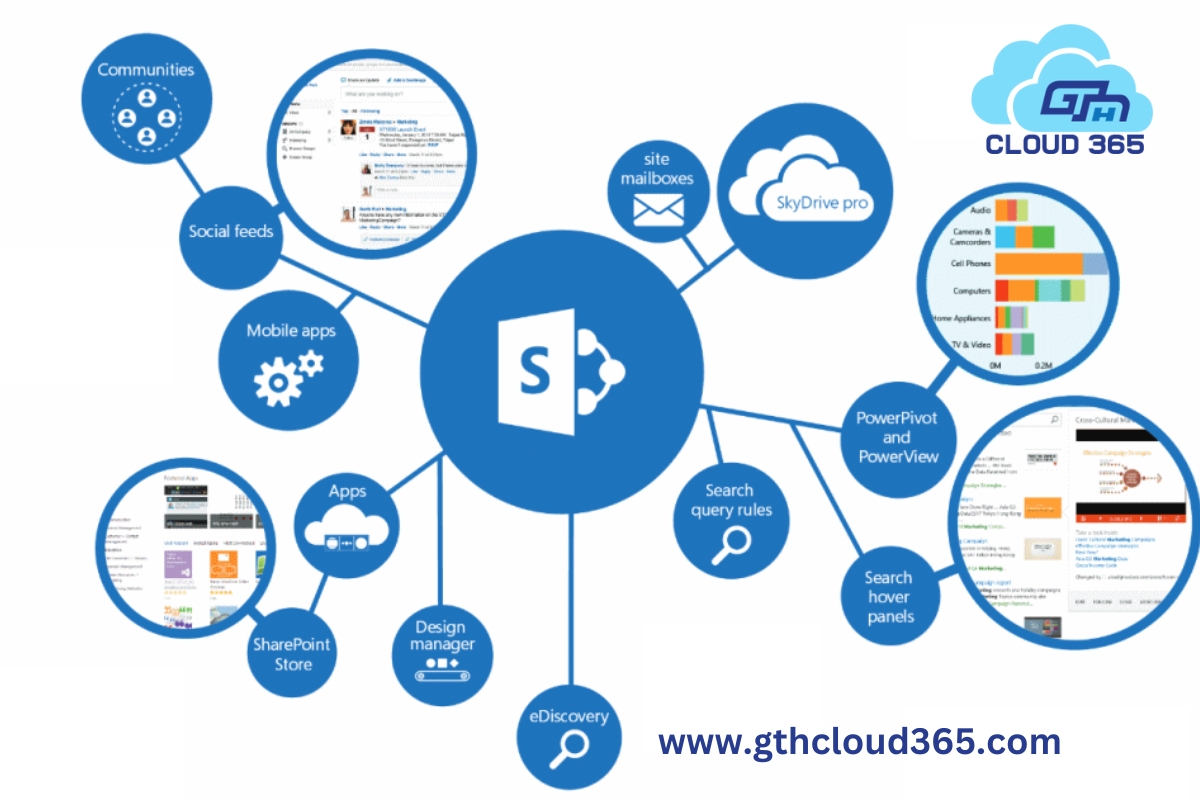Maximizing productivity is a constant pursuit for organizations striving to optimize their operations and drive efficiency. In this digital age, leveraging the right technology solutions is crucial, and Microsoft SharePoint stands out as a powerful tool for enhancing collaboration, communication, and workflow efficiency. This article delves into the realm of implementing Microsoft SharePoint solutions to unlock the full potential of your organization’s productivity. From understanding the basics of SharePoint to designing tailored solutions and measuring productivity gains, this guide provides a comprehensive roadmap for harnessing the capabilities of SharePoint to propel your organization towards greater efficiency and success.
1. Introduction to Microsoft SharePoint
Overview of Microsoft SharePoint
Microsoft SharePoint is like the Swiss Army knife of collaboration tools for businesses. It allows teams to store, organize, share, and access information from any device, anywhere. Think of it as a digital office space where everyone can work together seamlessly.
Benefits of Implementing SharePoint Solutions
Implementing SharePoint solutions can supercharge your team’s productivity. Say goodbye to messy email threads and scattered documents. With SharePoint, you can streamline workflows, improve communication, and boost efficiency. Plus, it integrates seamlessly with other Microsoft tools like Word, Excel, and Teams.
2. Assessing Your Organization’s Productivity Needs
Identifying Current Productivity Challenges
Before diving into SharePoint, take a good hard look at your team’s current struggles. Are documents getting lost in the abyss of email chains? Is collaboration a chaotic mess? Identifying these pain points will help tailor your SharePoint solution to fit your organization’s unique needs.
Conducting Stakeholder Analysis
Get the lay of the land by understanding who will be using SharePoint and how. Talk to different departments, gather feedback, and involve key stakeholders in the planning process. After all, a tool is only as good as its user adoption, so make sure everyone’s on board.
3. Planning and Designing SharePoint Solutions
Defining Objectives and Goals
Set clear goals for what you want to achieve with SharePoint. Whether it’s improving document management, enhancing collaboration, or simplifying processes, having a roadmap will keep your implementation on track. Remember, Rome wasn’t built in a day (or without a plan).
Customizing SharePoint for Your Organization
One size does not fit all in the world of SharePoint. Customize your site to match your organization’s branding, structure, and workflows. From libraries to lists, tailor SharePoint to fit like a glove and make it a seamless extension of your existing processes.
4. Implementing SharePoint Solutions
Migration Strategies and Best Practices
Moving existing data to SharePoint? Plan your migration strategy carefully to avoid ending up in digital purgatory. Whether it’s a phased approach or a big bang migration, make sure your data lands safely in its new SharePoint home.
Configuring Security and Permissions
Security first, always. Protect your information by setting up proper permissions and access controls in SharePoint. Whether it’s restricting sensitive documents to certain teams or locking down who can edit what, keep your data safe and sound in the SharePoint fortress.
5. Training and Adoption Strategies
Creating Training Programs
When it comes to implementing Microsoft SharePoint solutions, creating effective training programs is key. From basic navigation to advanced functionalities, ensuring that your team is well-versed in using SharePoint will maximize productivity and efficiency.
Driving User Adoption and Engagement
User adoption is critical for the success of any SharePoint implementation. Encouraging engagement through communication, training, and highlighting the benefits of using SharePoint can help drive user adoption and make the transition smoother.
6. Monitoring and Measuring Productivity Gains
Setting Key Performance Indicators (KPIs)
To measure the effectiveness of your SharePoint solutions, it’s important to set clear Key Performance Indicators (KPIs). Whether it’s increased collaboration, reduced response times, or improved document management, tracking KPIs will help gauge productivity gains.
Utilizing Analytics and Reporting Tools
Leveraging analytics and reporting tools within SharePoint can provide valuable insights into user behavior, system usage, and overall productivity. By analyzing data and trends, you can identify areas for improvement and optimize your SharePoint solutions.
7. Continuous Improvement and Optimization
Feedback Collection and Iterative Updates
Continuous improvement is essential for maximizing productivity with SharePoint. Collecting user feedback, evaluating performance, and implementing iterative updates based on insights will help enhance the user experience and keep your solutions optimized.
Scaling and Expanding SharePoint Solutions
As your organization grows, scaling and expanding your SharePoint solutions may become necessary. Whether it’s adding new features, accommodating more users, or integrating with other systems, ensuring scalability and flexibility will support long-term productivity goals.
8. Conclusion and Key Takeaways
Recap of Key Points
In conclusion, implementing Microsoft SharePoint solutions can greatly increase productivity within your organization. By focusing on training, user adoption, monitoring productivity gains, continuous improvement, and scalability, you can maximize the benefits of SharePoint.
Next Steps for Maximizing Productivity with SharePoint
Moving forward, continue to prioritize user training, feedback collection, and performance measurement to drive productivity gains with SharePoint. Embrace a culture of continuous improvement and innovation to ensure your SharePoint solutions evolve with the changing needs of your organization.In conclusion, implementing Microsoft SharePoint solutions offers a transformative opportunity for organizations to streamline processes, enhance teamwork, and boost overall productivity. By following the strategies outlined in this article – from thorough planning and effective implementation to continuous monitoring and improvement – businesses can harness the full potential of SharePoint to drive success in today’s competitive landscape. Embracing SharePoint as a productivity-enhancing tool sets the stage for ongoing innovation and efficiency, ensuring that organizations can adapt and thrive in an ever-evolving business environment.


